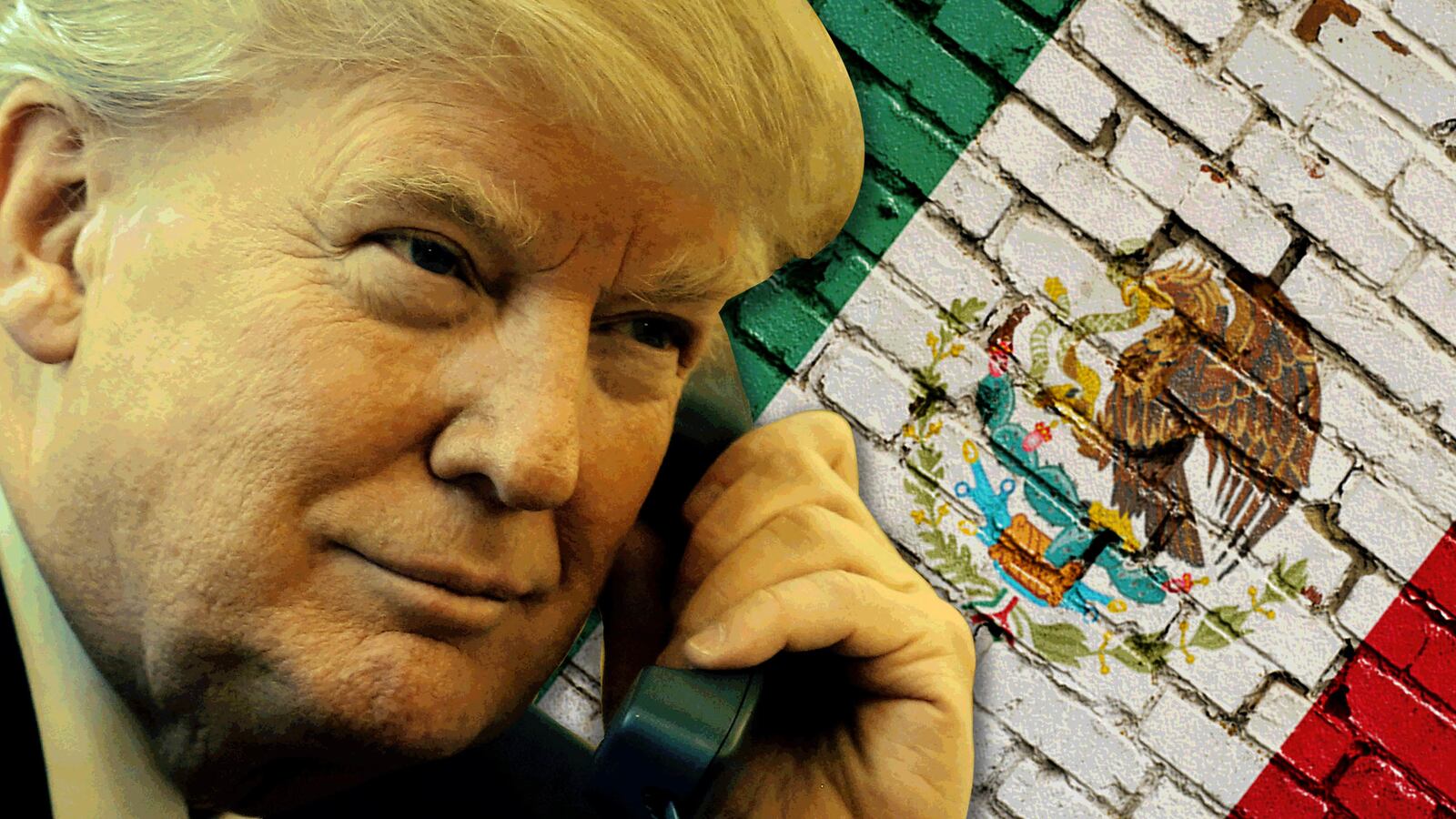U.S. Customs and Border Protection Commissioner Gil Kerlikowske left his job at the Department of Homeland Security at 12:01 p.m. on Jan. 20, just as Donald Trump was taking the oath of office. No one from the Trump team contacted him during the transition. Asked what advice he might have given if asked, he told The Daily Beast he would “not weigh in” on policy, but would offer “operational” pointers as someone who had led the agency and its thousands of agents.
“I would have said that anything as complex as banning people from entering requires very specific and detailed protocols to carry out at the operational level,” Kerlikowske says. “You have to provide this information to 24,000 CBPO’s (Border and Customs officers) at over 300 ports of entry. Any emergency enactment, unless of course there is an emergency or significant threat, of a directive this complex requires careful planning and organization. Obviously that was not done.”
Border agents caught by surprise grappled with President Trump’s ill-conceived executive order banning much travel from seven Muslim-majority countries. Lawyers raced to airports to represent stranded travelers while Trump tweeted “all is going well with very few problems… If the ban were announced with a one week notice, the ‘bad’ would rush into our country during that week. A lot of bad ‘dudes’ out there!”
Kerlikowske sat down with The Daily Beast for an interview the day Trump signed an executive order authorizing the wall, and he responded later by email and phone to the additional punitive measures taken by the White House against immigrants and refugees, and to the rift with Mexico.
“I don’t know about the trade imbalance, but on immigration and migration issues, Mexico has been a very good partner,” he says. The Mexican government, he notes, has stopped the practice of thousands of people hanging on the side of trains to reach the border, and they’re strengthening border enforcement with Central America, sending people back.
He bristles at Trump’s assertion that the border with Mexico is “soft and weak. Drugs are pouring in,” labeling those assertions “alternative facts.”
He knows about the flow of drugs. He was Obama’s drug czar, heading the office of National Drug Control Policy from 2009 until Obama named him Border commissioner in 2014.
Contrary to what Trump says, marijuana seizures are way down now that it’s legal in five states, and high quality marijuana is made in America. Cocaine use is down by almost half since 2007, “and people aren’t snapping on a backpack of heroin” and crossing the border, he says. “We just don’t see that.”
Trump wants to build a wall that Kerlikowske says is not needed. Illegal immigration from Mexico is at a 40-year low, and more Mexicans return to their country than enter the United States.
“I often called it a border management issue, not border security,” he says.
A police chief in Seattle before he joined the Obama administration, Kerlikowske is a soft-spoken, just-the-facts kind of guy, who had his eyes opened on his first visit to McAllen, Texas, just days after the Senate confirmed him as Border commissioner in March 2014. Close to 68,000 unaccompanied children would come across the border that year, the overwhelming majority to escape gang violence in Guatemala, Honduras, and El Salvador.
There was no place to put them. “It was like having a front row seat at a humanitarian disaster,” Kerlikowske says as he describes the scene. Children were sleeping on the floor or outdoors with nothing but thin Kevlar space blankets. Border agents were microwaving burritos and bringing in clothes from their own kids.
The facilities are better now with a large warehouse to accommodate about 34,000 people, and contracts for food service and medical care. But they’re already above capacity with more than 40,000 people, he says. “They’re overcrowded and burned through the budget numbers very quickly.”
About 2,000 people a day come across the border, numbers that would seem to support Trump’s call for a greater physical barrier to keep people out.
But when you dig into the numbers, a wall is not the answer, says Kerlikowske. Trump is responding to an outdated stereotype of young, single Mexican men coming to America illegally to work, and sending money back to their families. During the campaign, Trump floated the idea of intercepting these remittances to pay for the wall.
In the last fiscal year, only 87,000 of the 415,000 who crossed into the United States illegally were Mexicans.
The bulk of immigration across the southwest border today comes from Central America. Unlike Mexicans caught at the border who are subject to “expedited removal” to a contiguous country and can be turned back, immigrants from Honduras and Guatemala and El Salvador come up to border guards in green uniforms, turn themselves in and ask for protection.
They can then make a lawful claim of “credible fear,” which grants them a court hearing. “That doesn’t mean they’re given a free pass,” says Kerlikowske, “but there’s no swiftness and no certainty to the hearing and that’s unfortunate.”
There’s a backlog of 3 to 5 years in immigration cases, “and that’s the Department of Justice. It has to be fixed,” he says. “It’s not a campaign promise to say ‘I’m going to hire more immigration judges,’ but that’s what’s needed.”
Trump fired the acting head of ICE (Immigration and Customs Enforcement) the same night he fired acting Attorney General Sally Yates.
People can’t be detained waiting for a hearing that is years in the future, so many become part of the 11 million or more people in the country illegally.
Trump won the presidency promising to disrupt the status quo with immigration at the core of his agenda. Border Patrol Chief Mark Morgan, hired just seven months ago by Kerlikowske to oversee and reform policing procedures at the border, was let go the same day that Trump signed an executive order authorizing a wall at the cost of $12 to $15 billion.
The National Border Control Council, the union that represents border agents, endorsed Trump early in his campaign, and its leadership supports the wall though Kerlikowske points out that the rank and file did not vote on it.
Union leaders were with Trump when he signed the executive order. They had voiced their displeasure with Morgan, a former FBI agent and the first “outsider” to lead the agency since it was founded in 1924. “They’re taking a lot of bragging rights” for his departure, says Kerlikowske.
There is fencing along one third (600 miles) of the almost 2,000-mile border. Some areas are so rugged they are considered impassable. Predator drones repurposed from Afghanistan fly along the border.
During the Bush administration, Homeland Security Secretary Michael Chertoff pushed for a virtual fence. A billion dollars later, his successor, Obama Homeland Security Secretary Janet Napolitano, pulled the plug on the project after 53 miles of sensors, cameras, radar and towers in Arizona failed to make a significant impact on illegal immigration, and political support in Congress waned.
With any luck, history will repeat itself.






